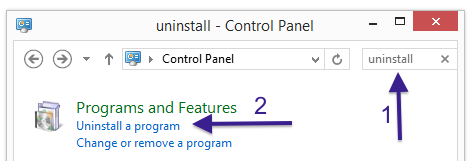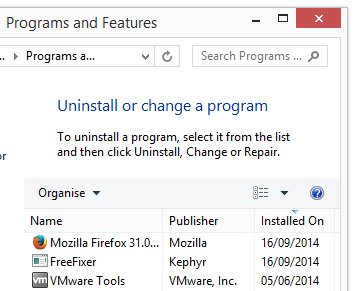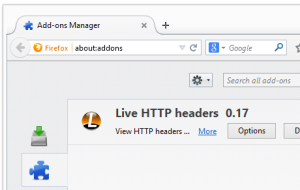Did you just get a pop-up from firstdate.com and wonder where it came from? Did the firstdate.com ad appear to have been launched from a web site that under normal circumstances don’t use aggressive advertising such as pop-up windows? Or did the firstdate.com pop-up or new tab show up while you clicked a link on one of the major search engines, such as Google, Bing or Yahoo?
Here’s a screen capture of the l.firstdate.com pop-up ad when it showed up on my machine:
Does this sound like your story, you presumably have some adware installed on your computer that pops up the firstdate.com ads. So don’t flame the people that owns the site you were at, the ads are almost certainly not coming from that website, but from the adware that’s installed on your computer. I’ll do my best to help you with the firstdate.com removal in this blog post. This is done by removing the unwanted adware from your machine.
I found the l.firstdate.com pop-up on one of the lab systems where I have some adware running. I’ve talked about this in some of the previous blog posts. The adware was installed on purpose, and from time to time I check if anything new has appeared, such as pop-up windows, new tabs in the browsers, injected ads on site that usually don’t show ads, or if some new files have been saved to the hard-drive.
So, how do you remove the firstdate.com pop-up ads? On the machine where I got the firstdate.com ads I had BlockAndSurf, BrowserWarden and TinyWallet installed. I removed them with FreeFixer and that stopped the firstdate.com pop-ups and all the other ads I was getting in Mozilla Firefox.
The issue with pop-ups like this one is that it can be launched by many variants of adware, not just the adware on my machine. This makes it impossible to say exactly what you need to remove to stop the pop-ups.
Anyway, here’s my suggestion for the firstdate.com ads removal:
The first thing I would do to remove the firstdate.com pop-ups is to examine the programs installed on the machine, by opening the “Uninstall programs” dialog. You can open this dialog from the Windows Control Panel. If you are using one of the more recent versions of Windows you can just type in “uninstall” in the Control Panel’s search field to find that dialog:

Click on the “Uninstall a program” link and the Uninstall programs dialog will open up:

Do you see something suspicious listed there or something that you don’t remember installing? Tip: Sort on the “Installed On” column to see if something was installed approximately about the same time as you started seeing the firstdate.com pop-ups.
The next thing to check would be your browser’s add-ons. Adware often show up under the add-ons menu in Chrome, Firefox, Internet Explorer or Safari. Is there something that looks suspicious? Something that you don’t remember installing?

I think you will be able to track down and uninstall the adware with the steps outlined above, but in case that did not work you can try the FreeFixer removal tool to identify and remove the adware. FreeFixer is a freeware tool that I started develop about 8 years ago. It’s a tool built to manually track down and remove unwanted software. When you’ve tracked down the unwanted files you can simply tick a checkbox and click on the Fix button to remove the unwanted file.
FreeFixer’s removal feature is not locked down like many other removal tools out there. It won’t require you to purchase the program just when you are about to remove the unwanted files.
And if you’re having difficulties figuring out if a file is clean or unsafe in FreeFixer’s scan result, click on the More Info link for the file. That will open up your web browser with a page which contains additional details about the file. On that web page, check out the VirusTotal report which can be quite useful:

Here’s a video guide showing how to remove pop-up ads with FreeFixer:
Did you find any adware on your machine? Did that stop the firstdate.com ads? Please post the name of the adware you uninstalled from your machine in the comment below.
Thank you!
